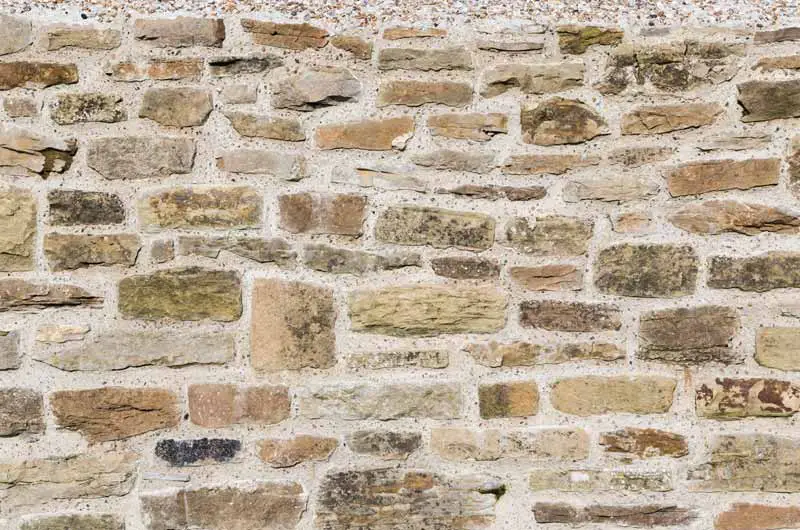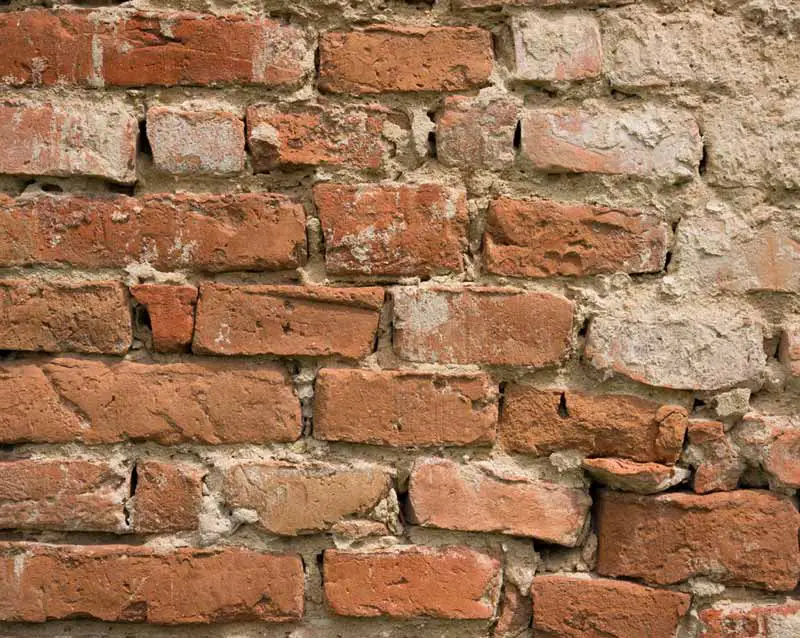
As you may have heard, lime mortars are a fantastic building material. They can help protect buildings and their stonework. But how do you know if you should use lime mortars for your project?
Most houses built before the 1900s were constructed with lime. Any building constructed initially with lime building materials must have similar lime building materials used to repair them. Old lime in need of repointing may be crumbly, or you may easily be able to remove it with a house key. If your building is constructed with a relatively soft stone or brick, then pointing with lime could be very beneficial.
Pointing is the finish between masonry, stone and brick. Repointing is the act of repairing old and damaged pointing by removing and replacing it. Now that we understand what pointing and repointing are let’s dive deeper.
The Benefits of Using Lime Mortars For Pointing
Many people don’t understand the fundamental role of building mortars. Lime mortars, especially when putty based, are soft. Ideally, pointing mortar should always be softer than the stone or brickwork surrounding it. This is important because the softest element of the wall will almost always fail first. And the easiest part of the wall to replace is always the lime mortar, not the masonry or brickwork.
Lime mortars act sacrificially. Rather than the stone or brick taking the brunt of harsh weather or building movement, the mortar does. Again, the mortar is the easiest part of the wall to replace; we wouldn’t want the movement of the building to damage the masonry. An older building repaired with cement will often have the masonry, stone, and brick damaged due to this.
Related article: How To Stop Lime Mortar From Cracking
Another critical factor to consider is longevity. Lime mortars can last for extremely long periods of time. There are ancient roman mortars still in good condition today. So why do lime mortars last for so long? It’s mainly due to their flexibility and soft nature. Lime mortars used for pointing can move with buildings over time; often, they can vastly distort before the building collapses.
Lime mortars have many excellent characteristics, making them suitable for almost any non-highrise building. Using lime mortars in old buildings originally constructed with lime is essential. Older buildings often have water ingress at some level; lime mortars act like a wick to suck up and expel water that would otherwise become trapped. Using cement mortar would trap this water, which over time causes significant damage.

Many cement mortars used for pointing are only expected to last for around 100 years and, in some cases, even shorter. Cement mortars are extremely hard, a massive advantage for skyscrapers and other highrise buildings. But due to their hardness, they are brittle. Building movement can cause the mortar to fail because of its lack of flexibility. This is why cement mortars perform so poorly on old buildings.
The Disadvantages of Using Lime Mortars For Pointing
Lime is a great building material that, in my opinion, should be utilised much more than it currently is for building. So why isn’t it? Well, building with lime mortars, plaster or render often takes much longer. The added labour cost usually makes using lime mortars more expensive to build with. For example, cement can take around 24-48 hours to set fully. On the other hand, lime mortar can take weeks to set, depending on weather and other conditions.
Lime mortars aren’t as convenient to purchase or find. Any good builders merchant will sell portland cement and sand to make a pointing mortar, but they often don’t supply lime putty, quicklime or hydraulic lime. They sometimes have hydrated lime or ‘builders lime’; this type of lime is only used to make cement mortars more workable and should never be used to create a proper lime mortar.
Lastly, lime mortars require more skill to use. Many processes go into using lime mortars to repoint old joints effectively, and it can be a reasonably steep learning curve. Having said that, if you follow good advice and respect the material, lime mortars are a joy to use.
What is The Best Mortar Mix For Repointing With Lime Mortars?
Many factors go into choosing an appropriate mix ratio for lime mortars. But a good general guideline is to use a mortar around a 1:3 lime: sharp-washed sand. Alternatively, putty-based lime mortars can be purchased pre-mixed usually in 25kg, 500kg or 1000kg bags, depending on the size of your project.
Related article: What Type of Sand is Best For Making Lime Mortar?
Pre-mixed mortars are wet with the lime putty and aggregates already mixed in the bag. Over time pre-mixed mortars may become fairly stiff or solid in the bags, but once they are given a good mix before use, they come back to life nicely. Although it may be tempting, always give pre-mixed lime mortars a good few minutes of mixing before adding any water. The longer they are mixed, the more workable and softer they become.
Some lime mortars contain additives to help match existing mortar or enhance the stone’s colour. For example, black grit can be added to mimic the black fleck of old wood-ash lime mortars. Lime mortars for blue lias stone often have grey pulverised ash to help complement the stone.
How Thick Should Lime Mortars be For Pointing?
Generally speaking, you should be fine if the mortar is thick and workable. The thicker the mortar is, the less shrinkage will occur. Lime mortars tend to be much drier in appearance to cement mortars. Using a mortar for pointing which is too wet, will cause excessive set times and shrinkage.
Usually, when using lime putty to make a lime mortar, you won’t need to add much, if any, water. This is because the lime putty is already a wet material. Mature lime putty resembles a very thick cream appearance and texture. Mixed with suitable aggregates, it usually creates a mortar with the perfect consistency for pointing. If your lime mortar is too sloppy, you can lay it out on a clean spot board in the sun to help dry it out. In an hour or so, it will be much better.

